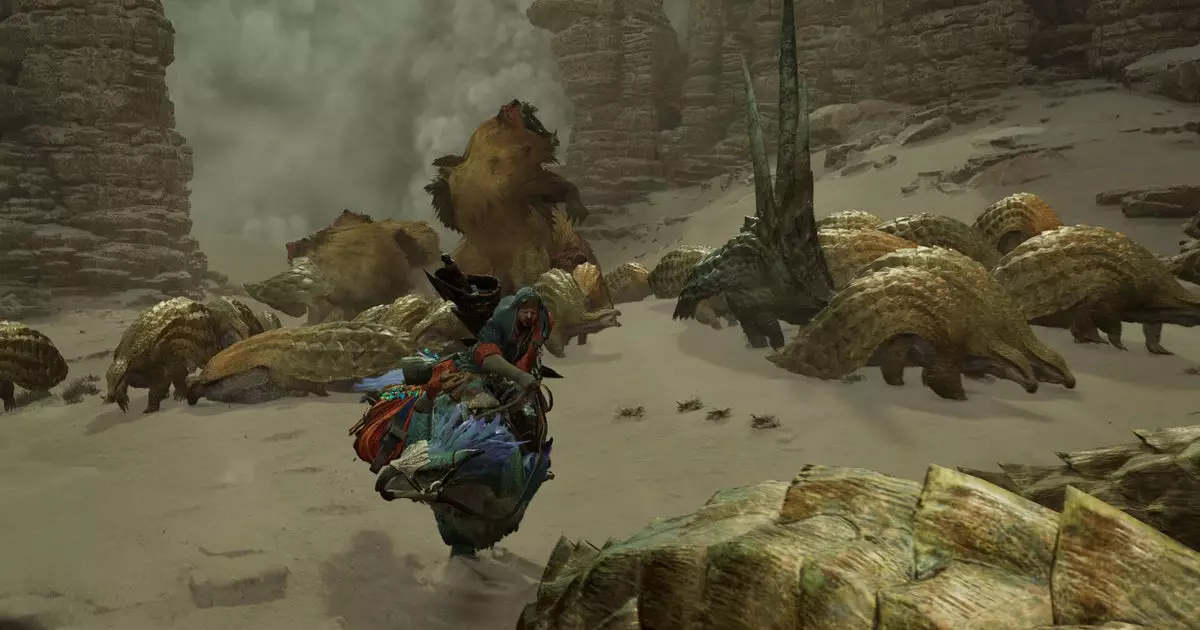The anticipation surrounding the release of “Monster Hunter Wilds” was palpable as players dove into the beta. With a franchise as beloved as Monster Hunter, even the slightest changes in mechanics can evoke a spectrum of reactions among its dedicated fanbase. One area of concern that has emerged from the beta testing phase is the combat system, particularly regarding hitstop—a pivotal aspect in delivering a satisfying and immersive fighting experience.
To fully appreciate the critiques that have arisen, it is essential to understand what hitstop entails. Hitstop refers to the brief pause in gameplay when an attack successfully connects with an enemy, giving players a moment to feel the weight and impact of their strike. This mechanic serves not only to convey a sense of power but also to enhance the flow of combat by creating rhythmic feedback between player action and enemy response.
The Oxford English Dictionary defines hitstop as a significant moment of impact, and its duration can drastically alter a player’s perception of the combat experience. For example, an extended hitstop period can make an attack feel more powerful and gratifying, whereas a reduction—or complete removal—of this moment can lead to feelings of weakness and dissatisfaction. As one popular analysis highlighted, the hitstop duration in “Monster Hunter Generations Ultimate” lasts eight frames, presenting a clear and satisfying impact window within its 30 frames per second frame rate.
When comparing the same weapon’s hitstop across various Monster Hunter titles, the discrepancies become glaring. The analysis by user Blue Stigma illustrated that previous entries, such as “Monster Hunter Rise” and “Monster Hunter World,” maintained hitstop durations of a quarter of a second and one-fifth of a second, respectively. These lengths allowed players to feel the weight of their attacks and created a rewarding combat rhythm.
However, the situation appears to have shifted in the current Wilds beta, where hitstop was reportedly reduced to zero frames for certain weapons, resulting in a less impactful gameplay feel. Weapons such as the switch axe, which previously provided satisfying feedback, now reportedly feel noticeably weaker, diminishing the player’s sense of engagement in combat scenarios. This stark shift raises vital questions about the design intentions behind the change and its implications for player experience.
The reactions from the gaming community have been mixed, with many players expressing disappointment regarding this apparent deprivation of satisfying combat mechanics. Numerous fan-created videos and discussions have emerged, reflecting a shared concern that the loosened hitstop may detract from the excitement and enthusiasm that the series has cultivated over the years.
Some players argue that it is possible the developers intended to streamline the combat experience in Wilds for a more accessible gameplay dynamic; however, this decision might have inadvertently rendered the gameplay less thrilling—especially for veteran players who expect a robust experience filled with the rewarding sensation of successfully landing hits. There is often a delicate balance in game design: while accessibility is crucial for welcoming newcomers, alienating long-time players can have adverse effects on a game’s reception.
The Future of Monster Hunter Wilds: Bridging Expectations and Reality
As Monster Hunter Wilds continues its development journey, it faces the challenge of harmonizing the desires of a diverse player base. The dialogue surrounding hitstop mechanics indicates an acute awareness among players of the intricacies of game design and player satisfaction. The development team will need to consider this feedback seriously, as it can significantly influence the game’s final form and overall reception at launch.
Additionally, the ongoing conversations within the community highlight players’ investment in the franchise, showcasing a passion that transcends surface-level gameplay elements. As more information emerges and future updates are released, it remains to be seen how Capcom will address these concerns and whether they will recalibrate the hitstop mechanics to create a more enriching combat experience.
The impact of mechanics like hitstop extends beyond mere numbers; they encapsulate a holistic player experience that is critical to the identity of the Monster Hunter series. Understanding and refining these elements will be essential for ensuring that “Monster Hunter Wilds” not only meets the expectations of its community but elevates the franchise to new heights.


Leave a Reply
You must be logged in to post a comment.